Bradford District Museums and Galleries worked with visual artist and designer Rhian Kempadoo-Millar as our Guest Curator/Artist on an Arts Council-supported project. As Rhian’s residency came to an end with us, this blog celebrates the process and result, a textile installation titled ‘New Lands – Hidden Hands’.
Bradford District Museums and Galleries (BDMG) are supported by the Arts Council as a National Portfolio Organisation (NPO). One part of the 2023/24 funded work was to recruit an ethnically diverse Guest Curator/Artist to explore our Designated Worsted collection. They would draw out the collection’s contemporary relevance and the hard work of the diverse communities that made the District internationally significant, leading to a reinterpretation of the permanent textile displays at Bradford Industrial Museum

by Tim Smith / Bradford Heritage Recording Unit (1987). In Bradford Museums’ collection.

by Tim Smith / Bradford Heritage Recording Unit (1989). In Bradford Museums’ collection.
In 2009, Bradford District Museums and Galleries’ Worsted collection was recognised by the Arts Council as being a collection of international importance and given ‘designated collection’ status. The collection preserves Bradford’s unique textile heritage and highlights the significant international role of Bradford, ‘Worstedopolis’, in the worsted industry. Worsted is a type of wool yarn that is made from long wool fibres which has been straightened and combed before being spun so it’s smoother and finer. You can find out more about the Designated Worsted collection and Bradford’s history as ‘Worstedopolis’ – the worsted wool capital of the world – in this blog.


Rhian Kempadoo-Millar, a Leeds based visual artist and designer, was recruited in the summer of 2023. Rhian had a series of research visits to Bradford Industrial Museum to meet Lauren Padgett, Assistant Curator of Collections, and Lowri Jones, Curator of Collections, to see some of the textile collection on display and some of our working textile machinery being demonstrated. She also met some of our textile volunteers and explored the textile collection behind the scenes in storage.
The collection that Rhian looked at included two Salt’s sample books. One was the 1853 pattern book of alpaca fabric, made with a cotton warp and alpaca weft, manufactured at Salt’s Mill, Saltaire, and created by Sir Titus Salt. While some were solid colours, other samples were vibrant and unexpectedly patterned.


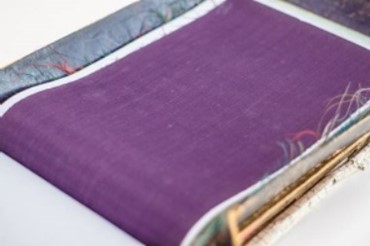


The other was a (really heavy and thick) 1920s sample book for Salt’s Ltd. Rhian was very interested in some of the designs and patterns in this book as some are reminiscent of designs and patterns used in textiles in other countries and cultures.



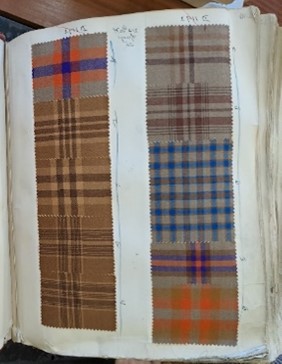

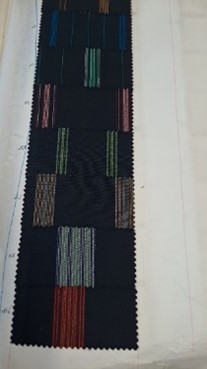
Rhian also did some painting offsite and on gallery at Bradford Industrial Museum, taking in the textile machines, yarns, fabrics and their bold colours.
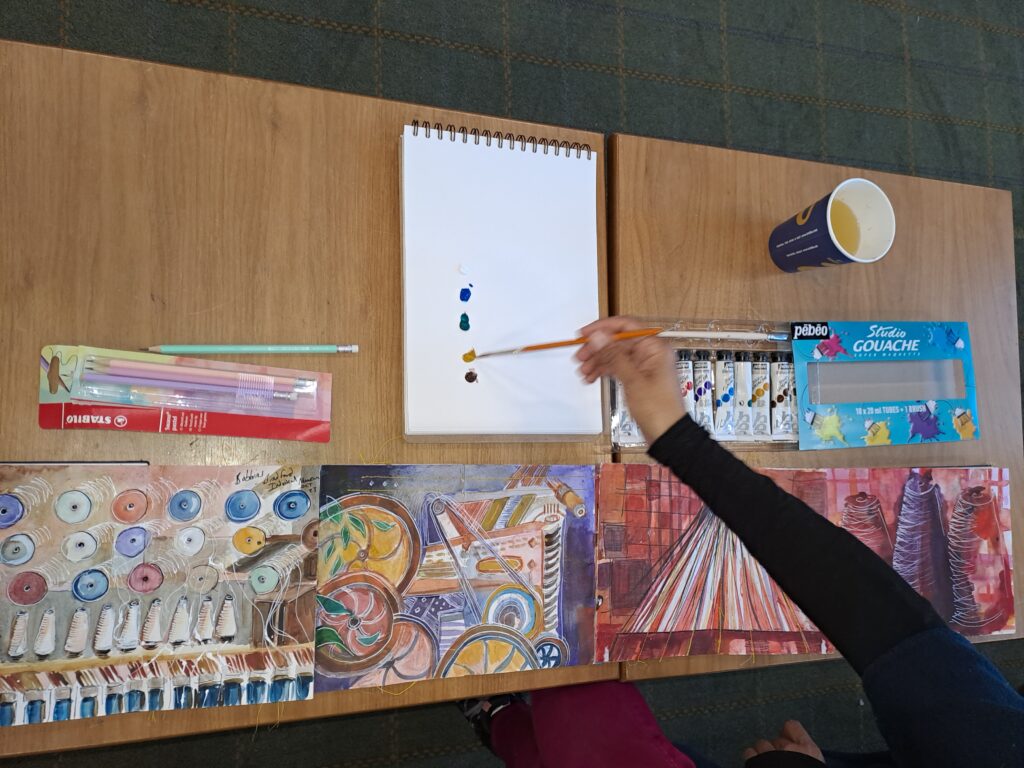
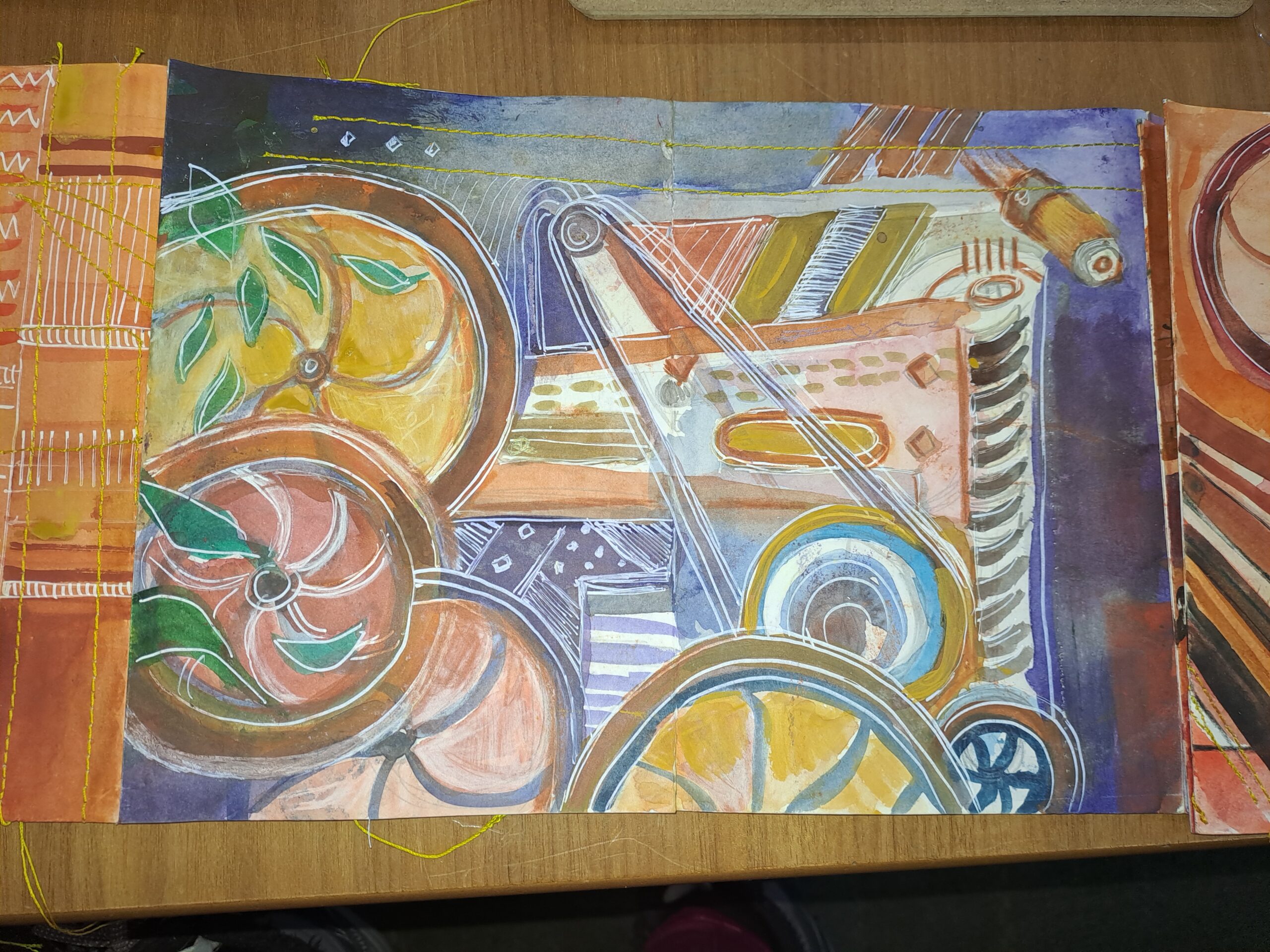
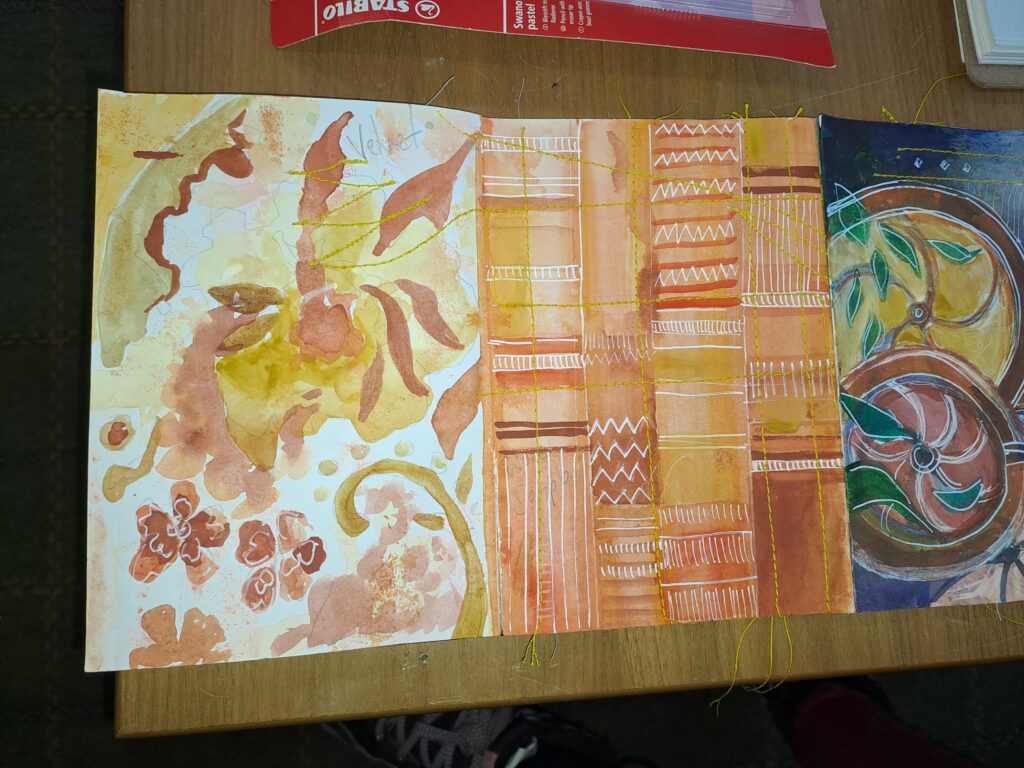

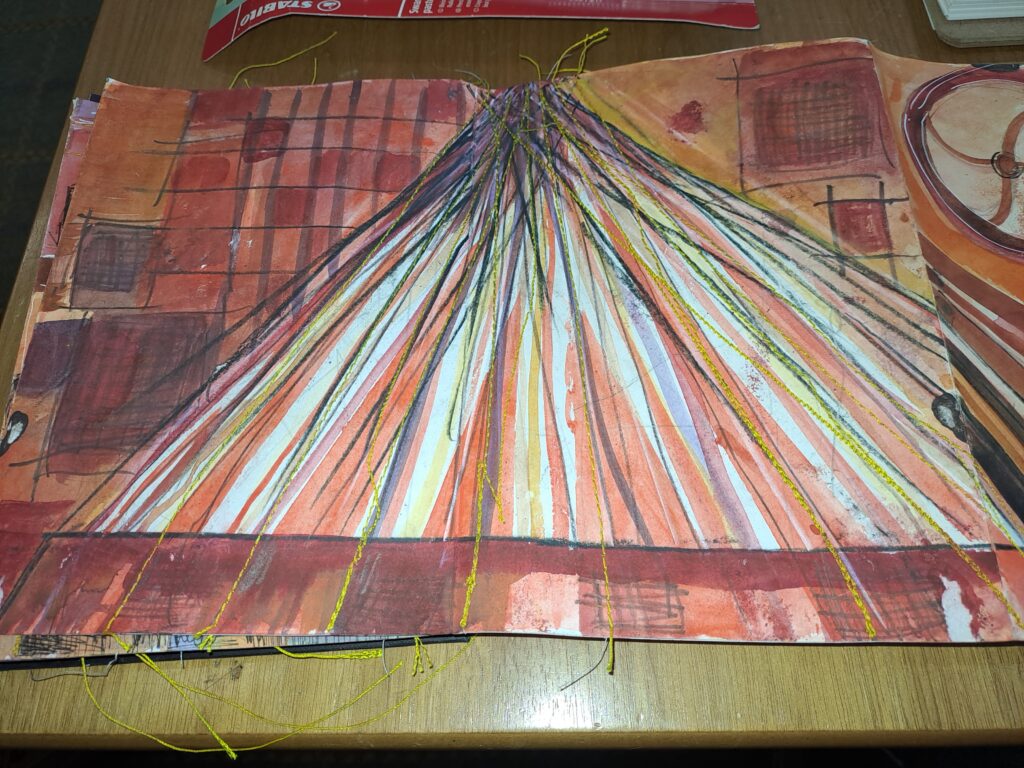
On Sunday 10th March 2024, as part of our International Women’s Day event at Bradford Industrial Museum, Rhian ran a drop-in carnival headpiece workshop where visitors could create a headpiece using colours, textures and inspiration from the textile collection. Visitors of all ages joined in and got creative and crafty – museum staff even got into the carnival mood.


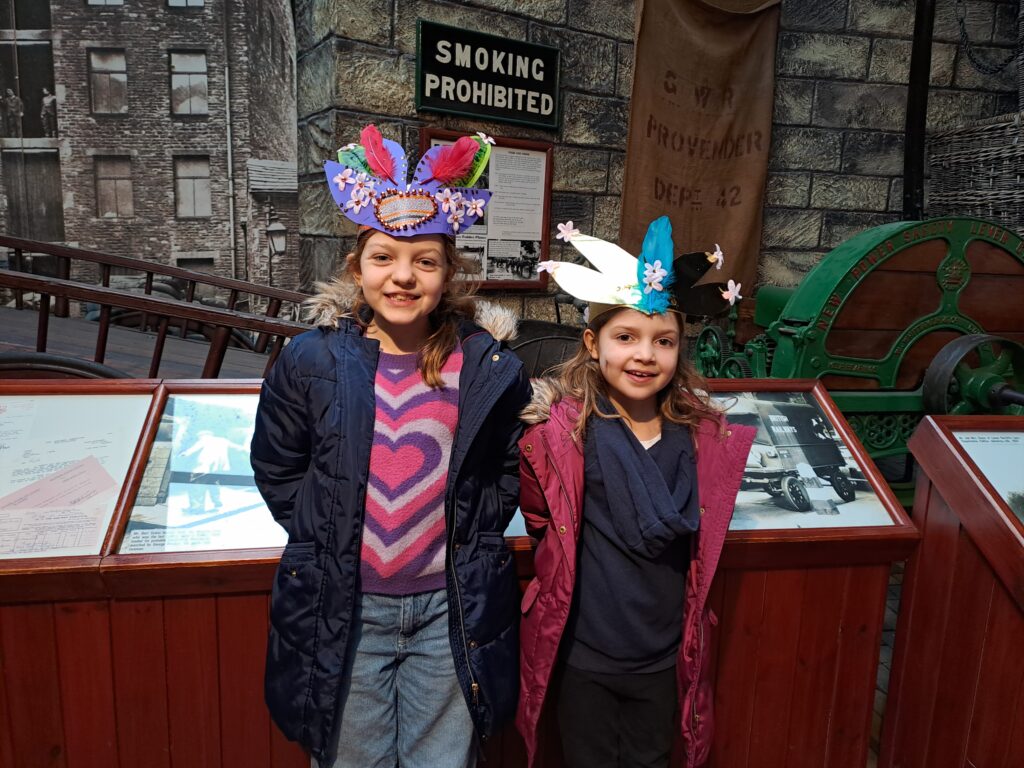
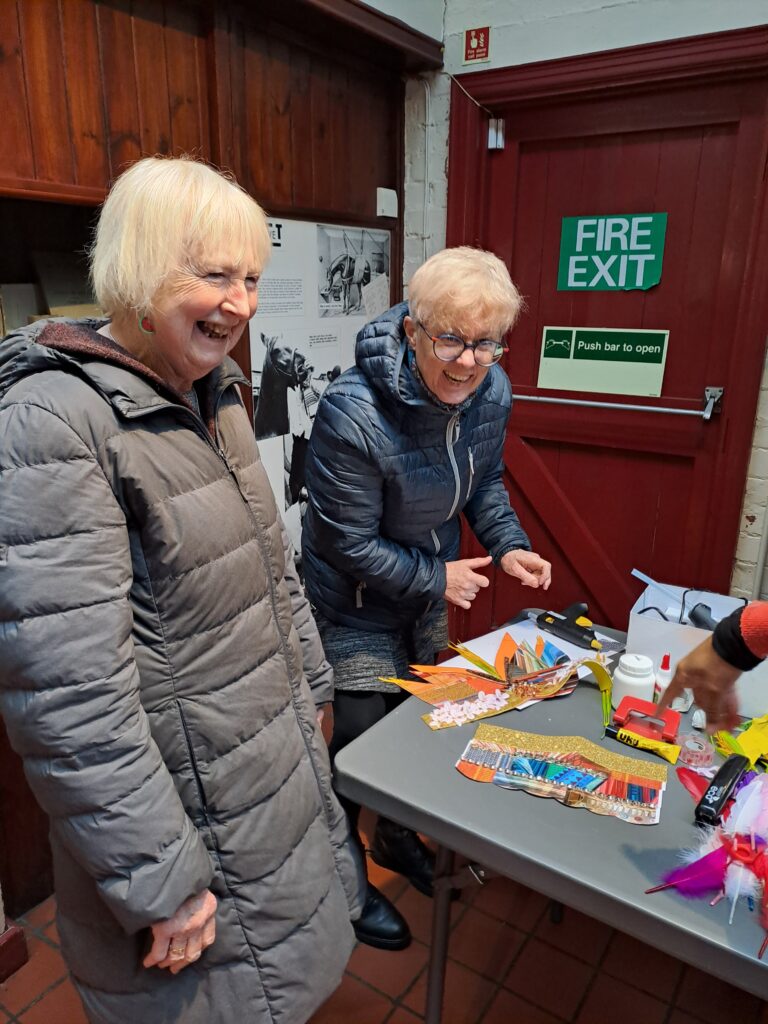

Inspired by the Designated Worsted collection and the rest of BDMG’s collection, Rhian decided that her artistic response would take the shape of three textile panels. Keen to emphasise the connection to the collections, Rhian planned to install the textile pieces embedded within the permanent textile displays in the Weaving Gallery. During a site research visit, Rhian and Lauren identified a perch (a frame used to drape lengths of fabric so perchers can identify and mark up any imperfections), the tabletop of a folding machine (used to fold fabric), and a mending table (a work surface for burlers to remove any knots or burrs – vegetable matter from the fabric, and for menders to correct any marked imperfections) in the burling and mending area of the Weaving Gallery as objects and spaces where the textile panels could be installed. They liaised with our Conservator, Dale Keeton, to let him know the display plans and discuss the textile pieces for his conservation input and guidance. Dale was onboard with Rhian’s ideas.
While Rhian worked on finishing and printing her textile panels, behind the scenes in April Lauren and Lowri worked with the weaving volunteers, particularly Joanne, to redisplay the burling and mending area. This will allow visitors to clearly see Rhian’s textile pieces when they are installed, and ensures that is still a functional area for the weaving volunteers who use the space.

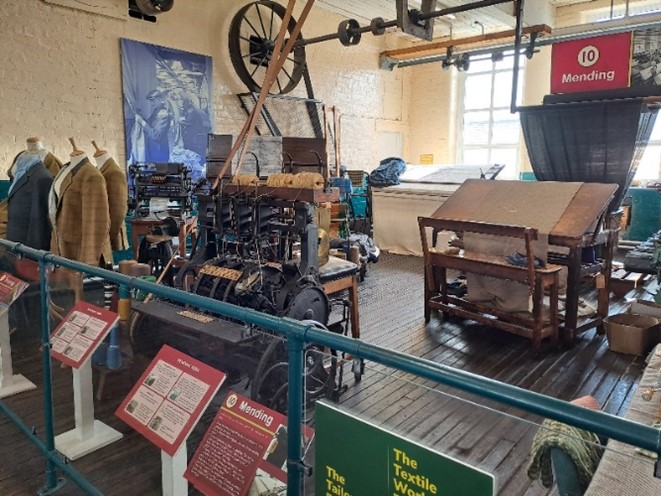
On Monday 13th May, Rhian, Lauren and Lowri installed the three textile panels that make up the new textile installation ‘New Lands – Hidden Hands’. The vibrant panels’ digitally printed collages consist of objects in our collections, such as Photo Archive images, photographs of textile samples and exhibits, and paintings of textile machinery. ‘New Lands – Hidden Hands’ responds to personal and hidden stories woven into the diaspora of the City which created contemporary Bradford as we know it today and explores the personal, geographical and intergenerational contributions embedded into the Worsted fabric industry. Rhian says that the panels “tell the human story of separation, longing, sacrifice, love, fear, bravery, reunion and family”.
The emotional warp,
The physical weft,
Creating the fabric of a new society.
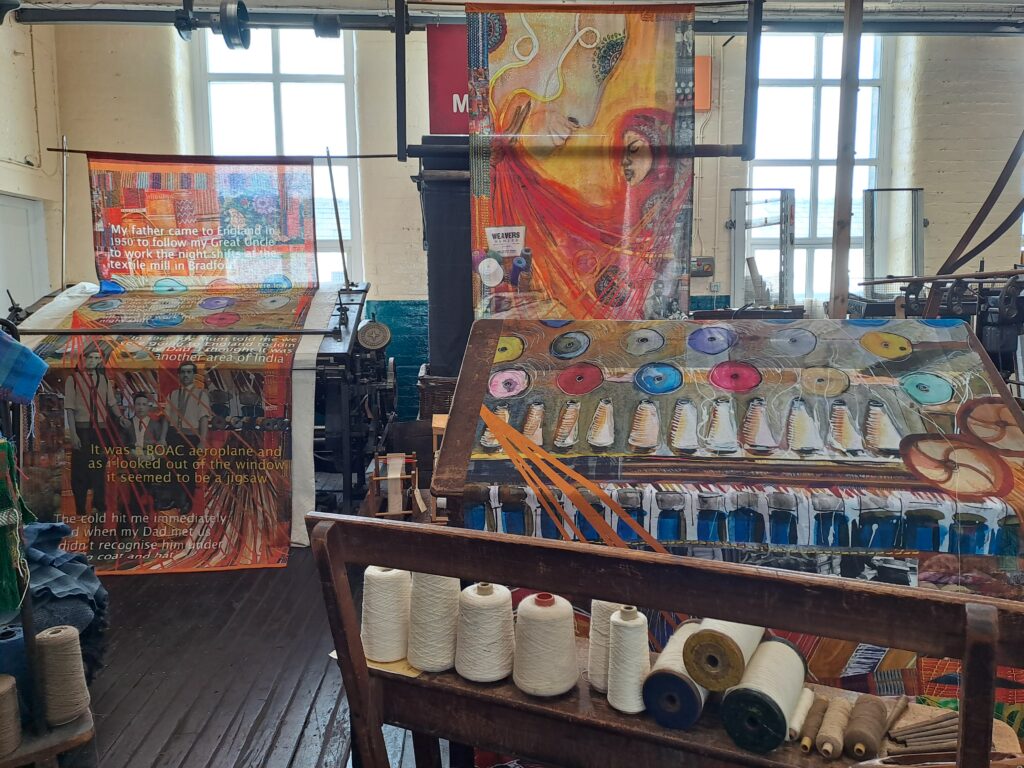
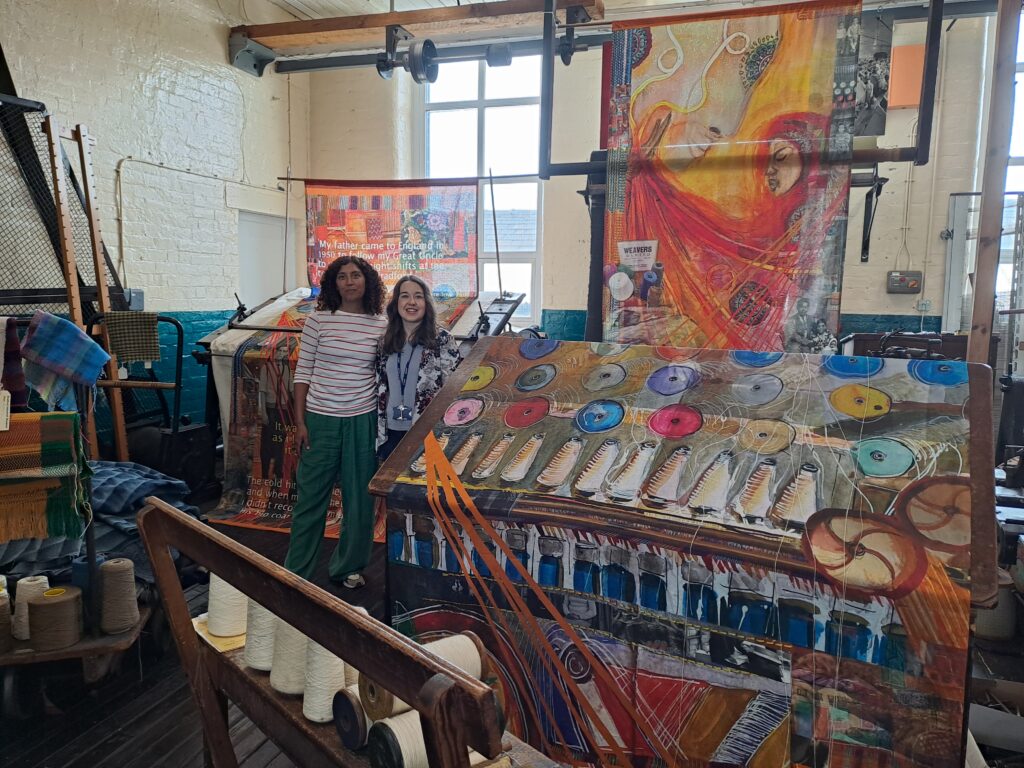
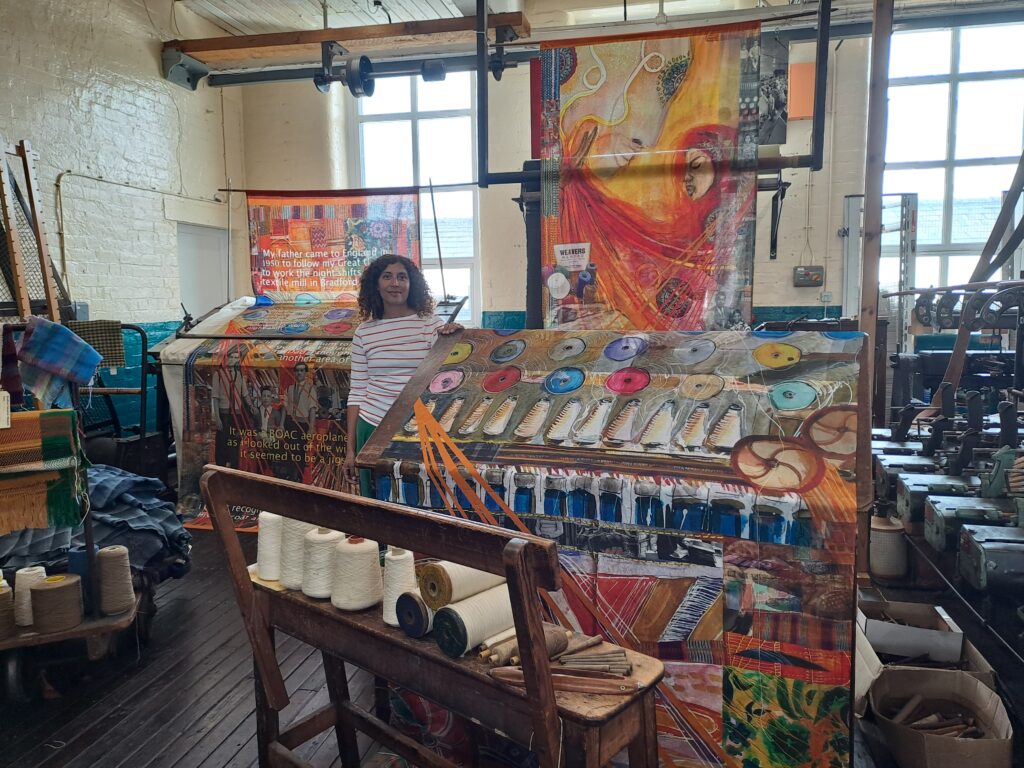

New lands – Hidden Hands’ is on display in the Weaving Gallery at Bradford Industrial Museum, open 10am – 4pm Tuesday – Friday, Saturday and Sunday 11am – 4pm.
